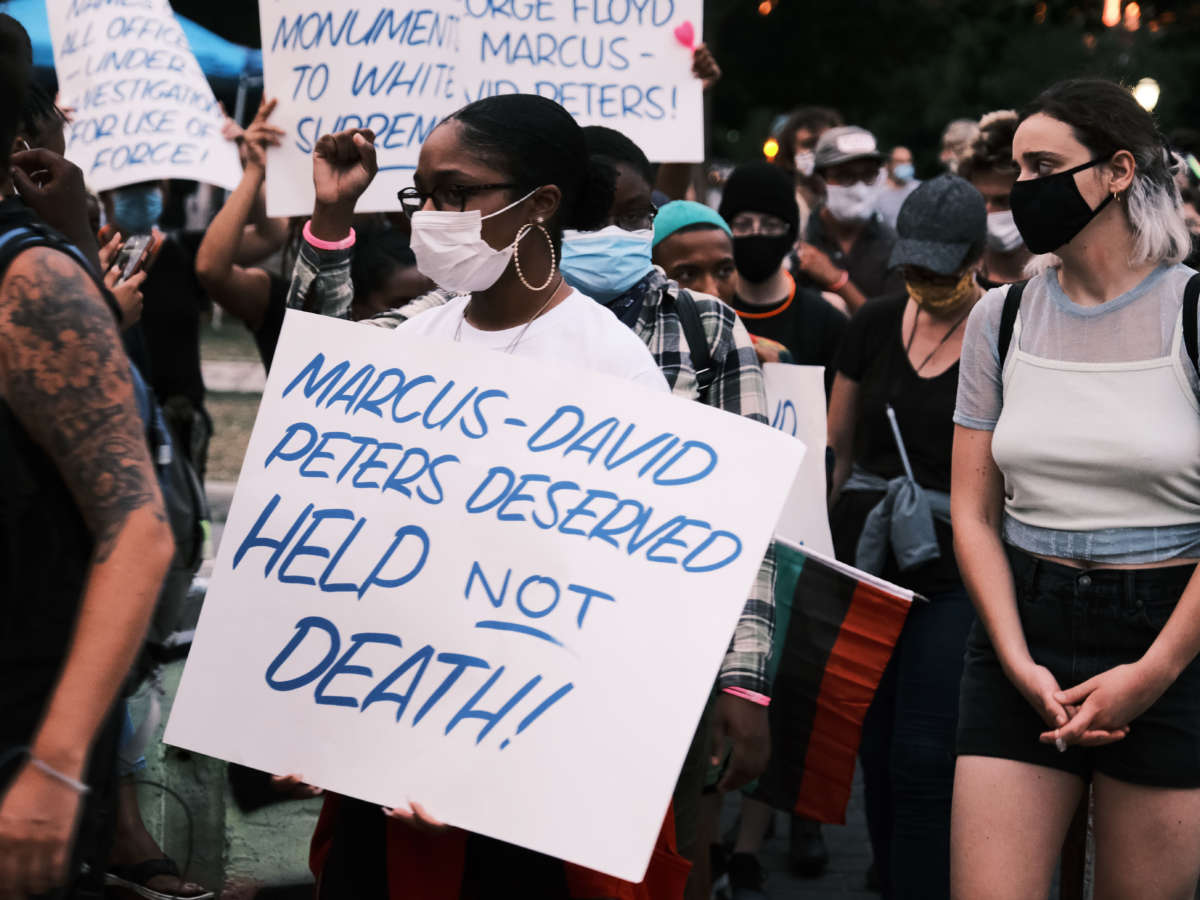“They’ll just end up arresting me.”
“I’m just scared they’ll ask for my papers.”
“What if they think my boy is an adult and rough him up?”
We’ve heard various versions of these fears many times in our personal lives, as a Latino man and Black woman, and in our professional roles as professors who teach about race and racism in society. While the fear that causes someone to avoid the police — whether a fear of racism, deportation, homophobia, sexual violence or some combination thereof — may vary between our communities, the underlying question is always the same: If I call the police, will the outcome be worse than the problem I am trying to address?
Many people fear calling the police for legitimate reasons. In immigrant communities, many worry that a call to the police is a quick way for them or someone in their home to wind up deported. Others, often in African American communities, fear that calling the police could result in their own victimization by police. Survivors of domestic violence may fear that police could escalate an already violent situation, if their story is even believed in the first place. Amid national discussions of racism and police-perpetrated violence, many bystanders worry that calling the police could make them an accomplice to race-based law enforcement violence. And sometimes, folks are so worried about the police showing up first to an emergency that they won’t even call 911 when other services — like EMT services after a vehicle accident — are needed.
Research has continued to provide evidence of what communities have been saying for decades, and health organizations have continued to speak out. The American Public Health Association, the largest organization of public health professionals in the United States, released a statement in November 2018 citing law enforcement violence as a critical public health issue that results in more than a thousand deaths a year, with disproportionate losses among people of color.
But fearing the police should not mean that you have no one to call in an emergency.
In response to the growing awareness of the biases in the policing system, non-police response programs have emerged, with examples in Austin, Texas; Eugene, Oregon; San Francisco, California and Edmonton, Canada. While these programs differ in some ways, they all work to divert individuals away from law enforcement, reduce emergency department admission and provide services such as conflict mediation, welfare checks, and non-emergency care and referrals.
Ann Arbor, Michigan, hopes to develop its own program to be added to the list. On April 4, Ann Arbor City Council approved $3.5 million in funds from the American Rescue Plan Act to develop an unarmed, non-police response to emergencies. The city council’s decision was inspiring — a testimony to the desire of our community to have a care-based response at the core of our city services. Among those who presented public comment in support of unarmed response was Kaveh Ashtari, a public health student and medical assistant, who told councilors:
One of the lasting effects of the COVID-19 pandemic is this challenge of trust. I’ve worked with individuals who don’t feel comfortable accessing emergency services during critical times due to fear of escalation, due to fear of violence, due to fear of their own safety. This fear is real. It is for this reason an alternative is needed that can ensure that an individual is able to feel safe, one that is unarmed, one that the community can trust.
Much of the effort for unarmed response in Ann Arbor has been led by the Coalition for Re-envisioning Our Safety (CROS), with whom we organize. CROS is a multiracial group of community members including social workers, public health experts, faith leaders, community builders, and others who have drawn on research, advocacy and community organizing to develop a plan for an unarmed, non-police response.
Among the key components of the plan are that the unarmed response program be supported politically and funded by city government, be separate from law enforcement and the criminal legal system, expand beyond a sole focus on providing mental health care in times of crisis, and include a public phone number separate from 911. Notably, this is not a plan that replaces 911 (or policing) but is instead additive, offering another option for those who fear that a 911 call may result in unnecessary police presence. The CROS plan, like other successful plans, draws on empirical research and prioritizes community-driven leadership.
President Joe Biden’s 2023 budget allocates an additional $30 billion to new police spending, and reports show an increasing number of cities using American Rescue Plan Act (ARPA) funds to increase their police forces. These are dollars that could have been spent supporting child care, reducing student loan debt or even providing additional COVID-19 tests to those without insurance. Instead, these funds will support further surveillance, bias trainings or community policing — all practices that have already proven to be unsuccessful at addressing racial inequities in policing. What’s needed is not more funding for policing but more funding for alternatives to police responses. For example, instead of using ARPA funds to expand a city’s police department, cities could opt to use ARPA funds for planning grants to apply for mobile crisis intervention services, mental health support in place of campus police for students, affordable housing to reduce recidivism, or other community-based services.
The data are convincing: Care-based safety programs aren’t just more humane, they create significant cost savings in health care, policing and legal fees, and reduce ambulance and emergency room services — costs that often otherwise fall on taxpayers. But moreover, non-police alternatives could prevent violence, deportation or ensnarement in the legal system. Everyone, no matter their relationship to the police, should have someone available to call in times of crisis.


